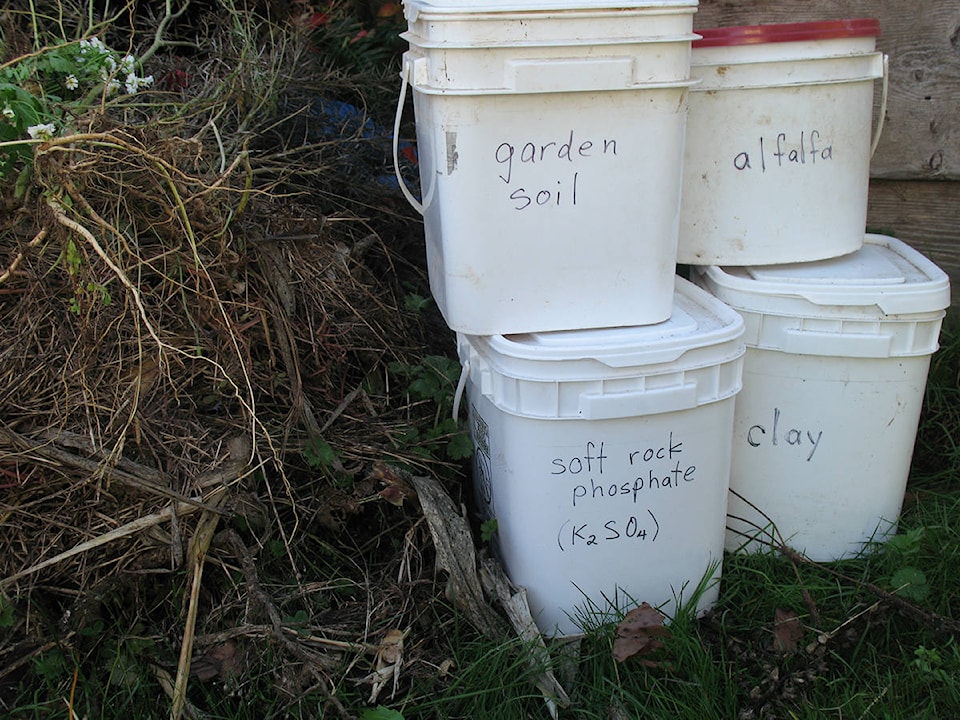By Mary Lowther
Mediocre compost can be made with almost anything, assuming that after all that preparation and labour you are content with mediocre, but after all the work I have done I want powerful compost to produce the most nutritious crops I can.
Organisms capture and retain more nitrogen in a cooler compost, so we don’t want it to become too hot because it loses nitrogen as ammonia gases off. A heap that is four feet in diameter and four feet high has been shown to work very well and any method that will produce this size should suffice.
I cut corn stalks into 12-inch lengths and lay two tiers of these at the bottom of the heap to provide upward air flow. I have ready the pile of dried vegetation and leaves gathered throughout the summer, including kitchen scraps and buckets of clay, good garden soil, soft rock phosphate and alfalfa meal. If I have manure, I’ll use a bucket of this too. I don’t use “compost activators” because studies have shown that good garden soil provides all the activation we need. Soft rock phosphate needs time to incorporate with the clay and compost inside the guts of red worms in the heap to produce long-lasting humus, so I like to add it to the heap as well as the fertilizer mix.
I lay three to four inches of vegetation on the stalks, then a sprinkling of each of the other amendments. I have a hose nearby and spray enough water on each layer to make it as wet as a wrung- out sponge. I layer everything until it reaches four feet and if anything’s left over I’ll save it for the next pile.
I cover the heap with a lid to keep out the rain, but a thick layer of straw would work as well. It sits in a shady spot because I don’t want it to heat up too quickly in the sun and, because I have a three-bin system, I let the compost sit for a year and a half before I use it. The heap decomposes very slowly, I don’t have to turn it and the final product contains fewer sow bugs and slugs because they’ve already done their work.
I have read that gardening has great therapeutic value, that fresh air and simple work are a great aid to free association and creative thought. That is certainly true, but as long as we are working we might as well grow the tastiest, healthiest and most nutritious food possible. Epicure Jean Brillat-Savarin would have agreed since he was the one who coined the phrase: “Tell me what you eat, and I will tell you what you are.”
Please contact mary_lowther@yahoo.ca with questions and suggestions since I need all the help I can get.
